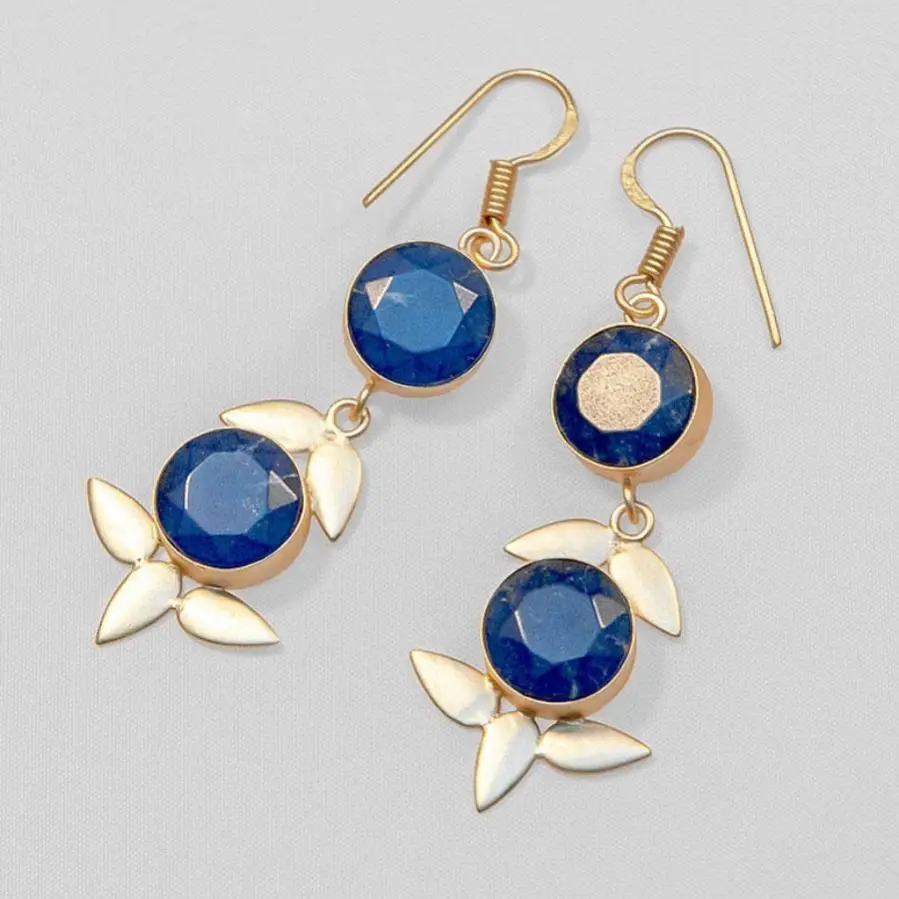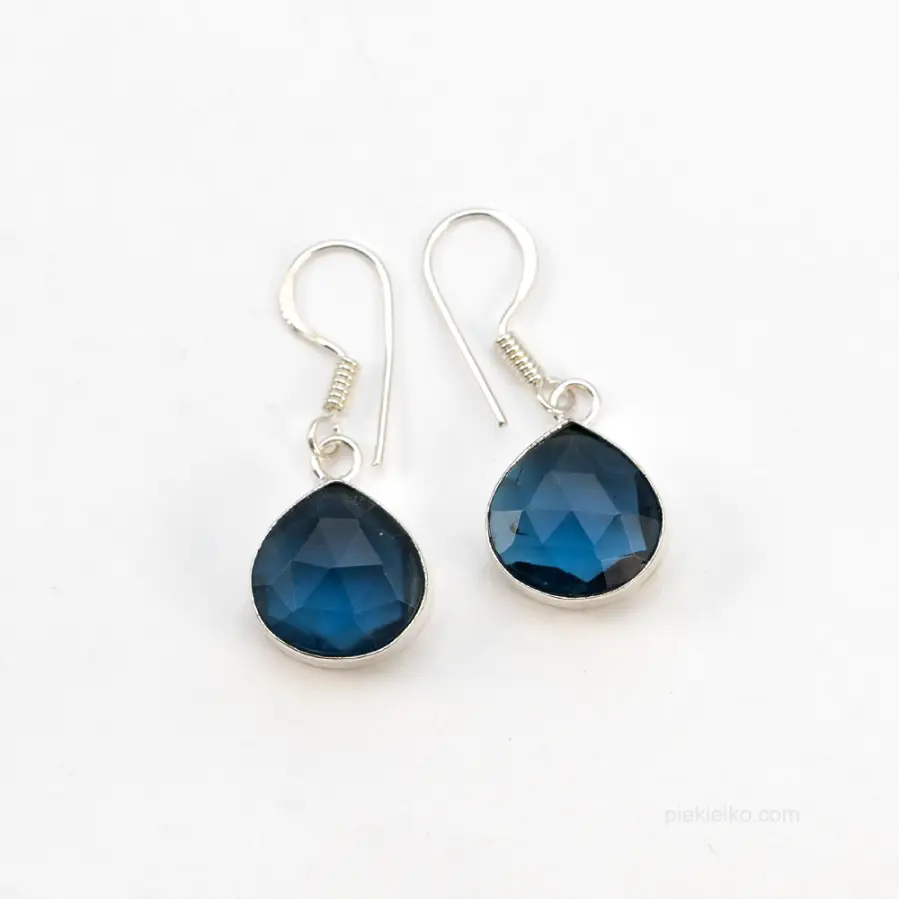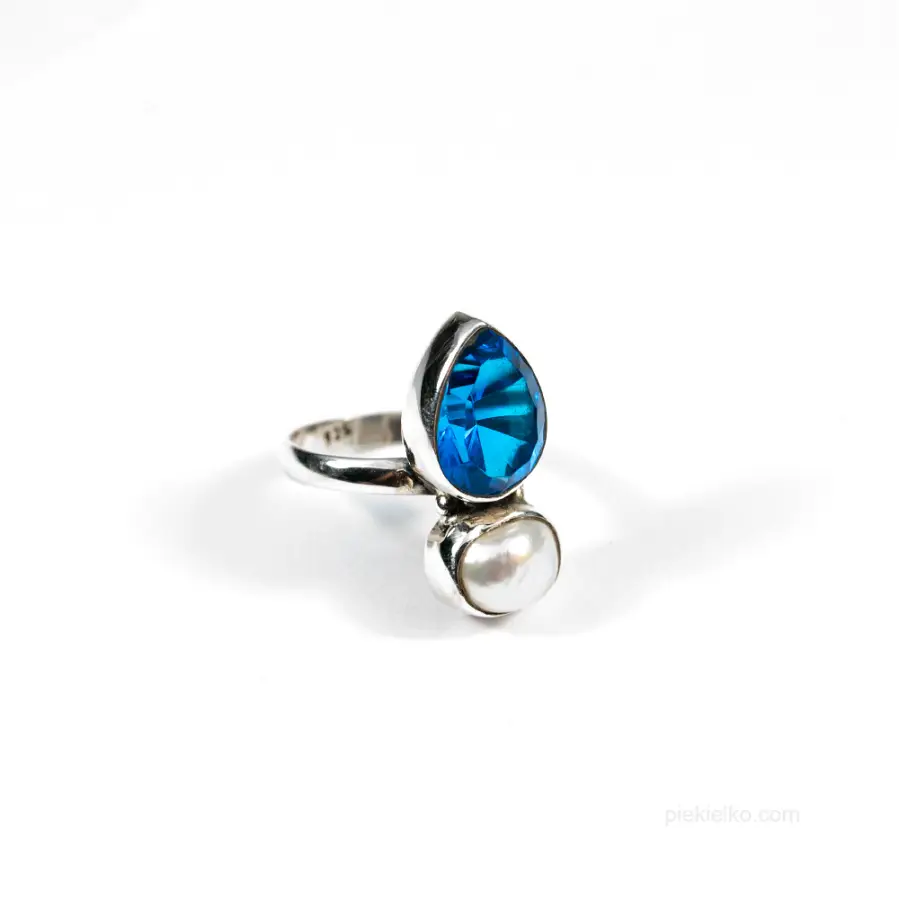Intermediates
Gallantry and accessories
Blog Piekiełka
Iolite - the violet stone and "compass of the Vikings"

Cordierite is a rare mineral of the silicate group and is better known by the name iolite or dichroite. French mineralogist Louis Cordier (1772-1861) originally called the mineral dichroite in his 1809 publication "Description du Dichroite, nouvelle espèce minerale." The Greek word dichroos = "two-colored" and has to do with the play of colors of this stone. Another scholar, Abraham Gottlob Werner, described dichroite under the name iolite because its dark violet-blue color reminded him of violet - ion in Greek.
To avoid confusion with other minerals exhibiting dichroism, which is manifested by a change in color depending on the angle of incidence of light, French mineralogist Jean André Henri Luca finally gave the mineral the name cordierite in 1813 - in honor of Louis Cordier.
The first mention of the iolite stone is encountered as early as the ancient epic of seafaring in Viking times. Back then, the mineral was used for spatial orientation, specifically to determine at sea the position of the sun in an overcast sky. This polarizing filter of sorts was called the "Viking compass." It is said to have been invented by the traveler and ruler of Greenland, Leif Eriksson, called Lucky, who was the first European to reach the coast of America several centuries before Columbus.
The use of iolite for jewelry products began in the 19th century, and the name iolite is derived from two Greek words ion = "violet" and lithos = "stone."
Properties of iolite
Chemically, iolite (cordierite) is a magnesium aluminosilicate with the formula Mg2Al4Si5O18 and a representative of the silicate cluster. The color of the stone is mostly blue in all intensities and shades, but it can also be yellowish, greenish, brownish or purple.
The blue, one might say violet, coloration of iolite is caused by the iron contained in the mineral - small amounts of this element produce lighter shades of blue, while high iron content colors the mineral dark blue. Purple-brown copies of the stone can be explained by the presence of iron oxides in their composition.
The luster of iolite is glassy or greasy at the break, and the scratch is white. A scratch marks the mark on an uncoated porcelain plate that the stone leaves. The flaking is clear in one direction and indistinct in two others. The mineral's fracture remains shell-like or uneven, and the transparency is total to partial.
Some iolite crystals show optical effects like cat's eye, iridescence or asterism. On Mohs' 10-grade hardness scale, iolite shows a high value of 7 to 7.5 and thus meets the criterion for a gemstone (hardness above 7). The density of the mineral is 2.53 bis 2.66 g/cm3.
Formation and occurrence of iolite
Iolite can be formed under magmatic conditions, as well as occur in rocks formed by contact metamorphosis. As a mineral component, iolite can occur in shale, granite and gneiss, among others. The minerals most commonly associated with cordierite include sillimanite, andalusite, corundum, sapphire and representatives of the feldspar group.
Iolite is a rare mineral, found in Sri Lanka, India, the USA, Canada, Brazil, as well as Scandinavia and Germany, among others. The largest deposit, discovered in1994, is in Madagascar. Stones weighing more than 5 carats (5 ct = 1 g) are found very rarely, they are usually two carats.
Importance and uses of iolite
Iolite is a stone highly valued in jewelry. Valuable specimens of the mineral are usually faceted (such as diamonds), and in the case of stones exhibiting the optical effect of a cat's eye, they are given a smooth cabochon cut.
Particularly challenging for jewelers is iolite's strong pleochroism (the phenomenon of color change depending on the polarization of light passing through the mineral), but a proper cut fully presents its beautiful violet color. Comparable to iolite blue have, often confused with it, sapphire, tanzanite, blue topaz. However, while sapphire and tanzanite are sometimes subjected to heating to enhance the color, iolite has an inherently striking color.
The healing properties of iolite have long been appreciated by lithotherapists: they recommend this stone for nervous disorders, insomnia, anxiety. Wearing the stone on oneself is advisable for people who are easily excitable or distracted. It is believed that the mineral is able to awaken hidden abilities in a person, activate mental agility and calm excessive enthusiasm. Ornaments with iolite are suitable for a 21st wedding anniversary gift.
Iolite is attributed with special usefulness for people engaged in creativity and spiritual zone. The stone aids their concentration, activates the mind, stimulates creative thinking, improves memory. It creates a calm and friendly atmosphere at work and in the family. It helps control emotions and avoid rash actions. The energy of iolite is also said to help those who are lost, restore hope and point the way to the future.
Iolite and zodiac signs
According to astrologers, the violet stone iolite primarily serves zodiac signs associated with the Air, helping them overcome their characteristic instability and dissipation of energy:
- Twins - facilitates concentration and tranquility, helps to delve deeper into a problem.
- Libra - improves firmness and self-confidence, helps fight shyness.
- Aquarius - helps to become more attentive, responsible and less fussy.
Other zodiac signs are also positively influenced by the stone:
- Sagittarius - will gain more calmness and reasonableness, will better cope with excessive impulsiveness.
- Fish - will bring order and self-discipline, turn their attention away from melancholy and depressive moods.
- Leo and Taurus - will find a way out of a difficult situation, as well as restore broken relationships with a loved one.
As for the other zodiac signs, astrologers do not find contraindications to the use of iolite. There are only some recommendations regarding the choice of the color of the stone:
- stones with light blue tones are close to zodiac signs belonging to the element of Water;
- stones with a cat's-eye or asterism effect should go to Lions;
- iolites with a reddish-brown hue are suitable for zodiac signs belonging to Earth.
Cordierite, otherwise known as iolite, is a stone suitable for everyone, regardless of age and gender. For the owner, it not only represents an aesthetic value, but can also become a reliable amulet.



© Piekielko.com





